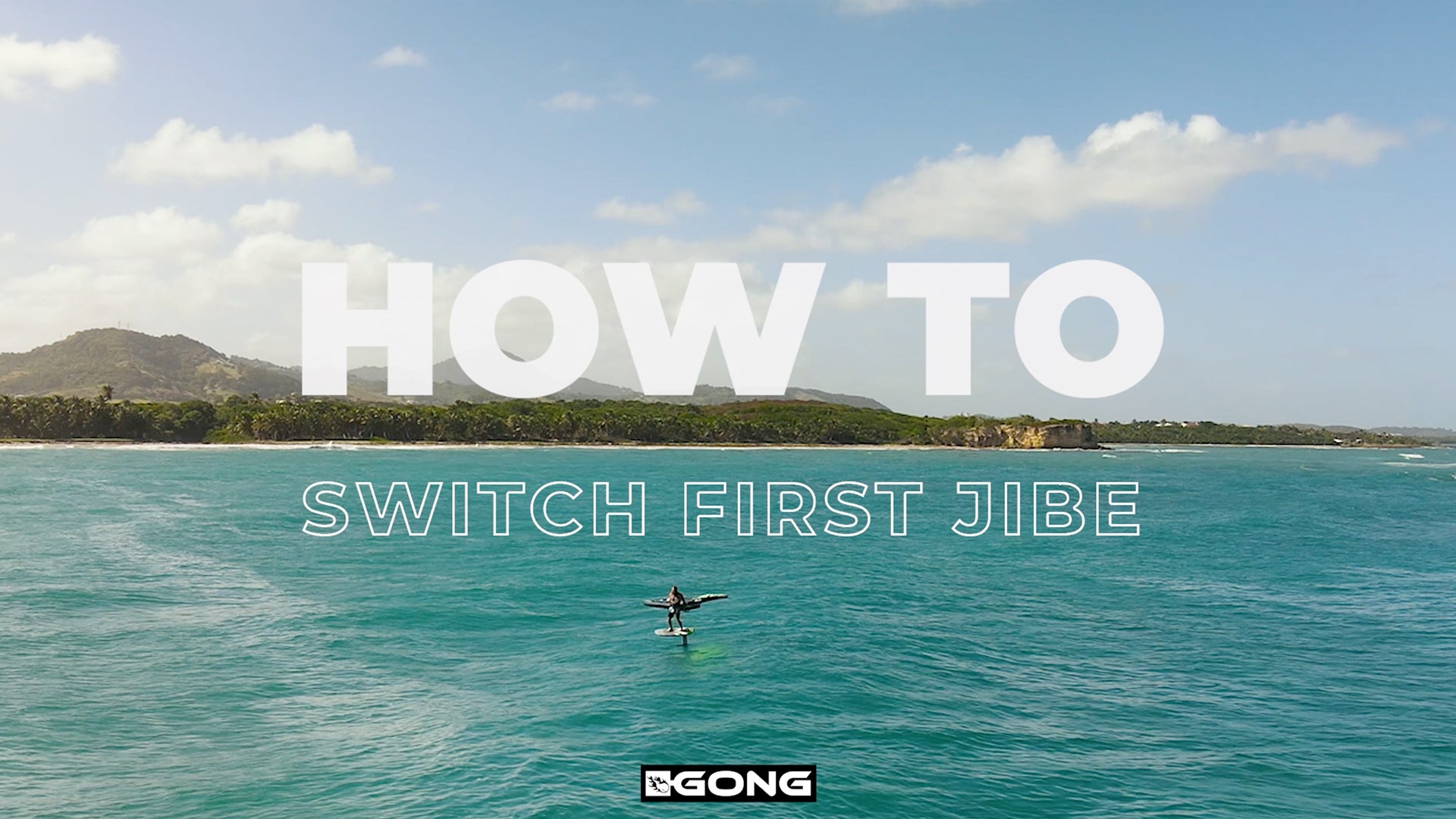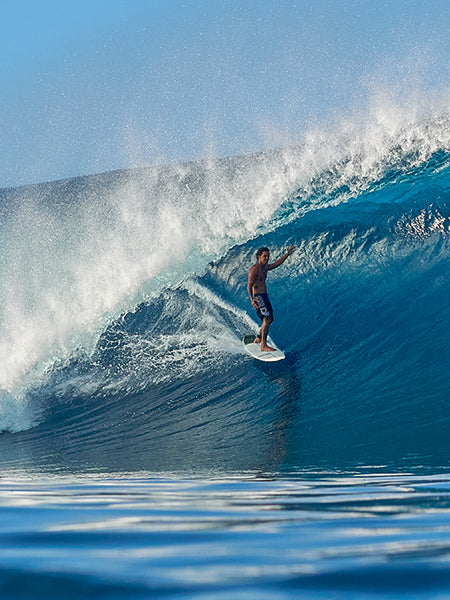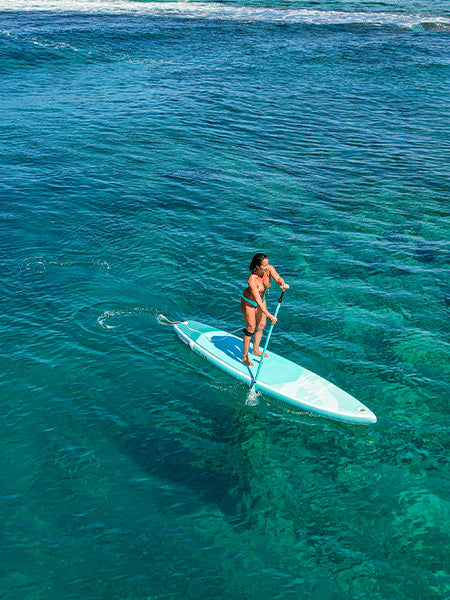Switch first jibe

The switch first jibe is a variation of the classic jibe. It is effective in all conditions and is easy to learn. To do this, you just need to know how to jibe. So let’s see how to do it.
Let’s say you’re sailing and want to jibe. But, you don’t want to do a classic jibe. This is where the first jibe switch comes in. You will therefore gain a little speed by sheeting in. Once this is done, bear off a little. If you don’t bear off, you might have more trouble getting your wing on the other tack. After doing this, put the wing windward and above you. To do this, bring your front hand back in front of and above your head while letting go of the back hand. By doing this, you will end up with the wing in an umbrella position above you. Be careful to put it in the umbrella position. If it is too open it will catch in the wind and come back behind you. If it is too closed it will go backwind and you will struggle to change your hands.
Switch your hands
Now that the wing is well positioned as an umbrella windward and above you, you will be able to switch your hands. Therefore grab the front handle (the one where your front hand is located) with the hand you previously released (the back hand). Once you have grabbed the front handle with your hand, let go of your front hand to go for the rear handle. If it all goes well, you should have switched your hands. Your back hand has become your front hand and vice versa. You will therefore be able to make the curve that will change your tack.
The curve
To do this curve, you need to do exactly the same as in a classic jibe (pressing on your toes or your heels depending on which way you are doing the maneuver). On the other hand, you will also have to pass the wing at the same time. To do this, start by bringing your hand closer to you while lowering it a little bit. While you are doing this, push in your back hand to rotate the wing. The angle you put your wing during the pass will affect how much power it gives you when turning. If you open it all the way until the central strut is upright, you will probably get ripped off a bit. But if you leave it neutral (in the umbrella position), you will have almost no extra power. The ideal is to have an angle of about 45 °. That way the wing will have just the power you need to speed up the curve a bit.
Now that you’ve pushed in your back hand and started the curve, you should find yourself running downwind. There, you will have to pull your hand up beforehand to prevent the wing from catching the water and losing your speed. As soon as the wing starts to go up, you will be able to tighten your curve. By doing this, you will get the most out of the power boost of the wing which will make you accelerate. Once the curve is complete, all you have to do is to sheet in and reset to continue your tack.
I advise you to start learning the wing switch first jibe from the toeside to heelside direction. You will have an easier time understanding the movement of the wing and the path of the hands. In the other direction, the balance is a little harder to maintain. But don’t worry, this move is very easy to learn. All you have to do is go to the water!Malo Guénolé









